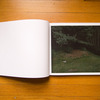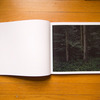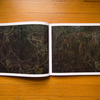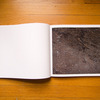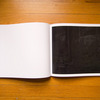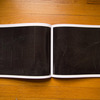Review: Repaires by Yann Mingard
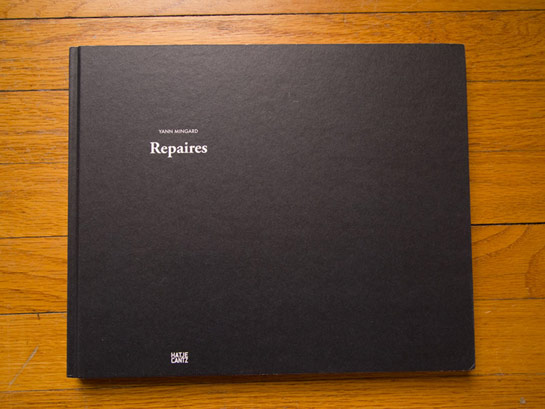
We want our landscapes to be sublime. We want to be overwhelmed, lacking words. We want to be in awe, getting reminded of our own smallness and mortality. Unfortunately, most landscapes don’t work that way. Most landscapes do not overwhelm the senses. Mind you, there is beauty all around us, but to see that beauty we need to make a bit of a mental effort. Being Swiss, Yann Mingard might have simply aimed his camera at the Swiss Alps. But he chose not to do so. Instead, he aimed it at what places where most people wouldn’t even bother looking twice - the kind of nature that surrounds so many of us. Repaires, the book containing the results of this endeavour, shows what is to be gained from doing that. (more)
In a nutshell, the book is divided into three parts of landscapes, which successively get darker and more mysterious. There are trees, or maybe small groups of them, grass, underbrush, pine cones lying on the ground - all of that contained in frames that at first sight appear random, but that aren’t random at all. I will admit that when I first looked at the book, I didn’t quite realize what was going on, but the fact that things got progressively darker, literally darker, drew me in. So I went back, looked at the book again, and I’ve been looking ever since.
I will also admit that the final section of the book is my favourite. Here, the light is so low that it is very hard to make out details in the photographs. But they are there, and they are incredibly beautiful. And the darkness is no darkness in the sense of feeling: There are no threats here. These are landscapes at the edge of night. This might be when it’s time to head home - but if you stay behind, this is what you will see (experience).
Here is, then, a book that maybe might make people not only look at itself more carefully over and over again, it might also make people look more carefully at what is outside, at whatever bits of Nature there are. One of the many qualities of photography is that it can make us look, it can teach us that there are many things to be discovered if we just look a little bit more carefully. Our senses are well developed to allow us to experience awe even when we’re not in the presence of grandeur. Repaires makes this very clear.
A few words about production quality. A photobook can be marred, if not ruined, by a sloppy or bad production (design, printing, binding, etc.). A good or excellent production, in contrast, does the opposite: It makes the photography shine. Repaires is yet another example of Hatje Cantz taking excellent care of all the relevant details. The print quality is very, very good - especially the dark images (the last third of the book) do not disappear in a mud of darkness as they easily could have. And while the overall format is classically conservative, there are various details which make this book look and feel contemporary, starting with the choice of cover, the treatment of type, and the fact that the cover boards have the same size as the pages.
Repaires, photographs by Yann Mingard, essays by Phillip Prodger and Nathalie Herschdorfer, 84 pages, Hatje Cantz, 2012
Technical note: The photographs of the spreads, in particular those of the dark images, do not do the print quality of the book any justice. Please keep that in mind.
